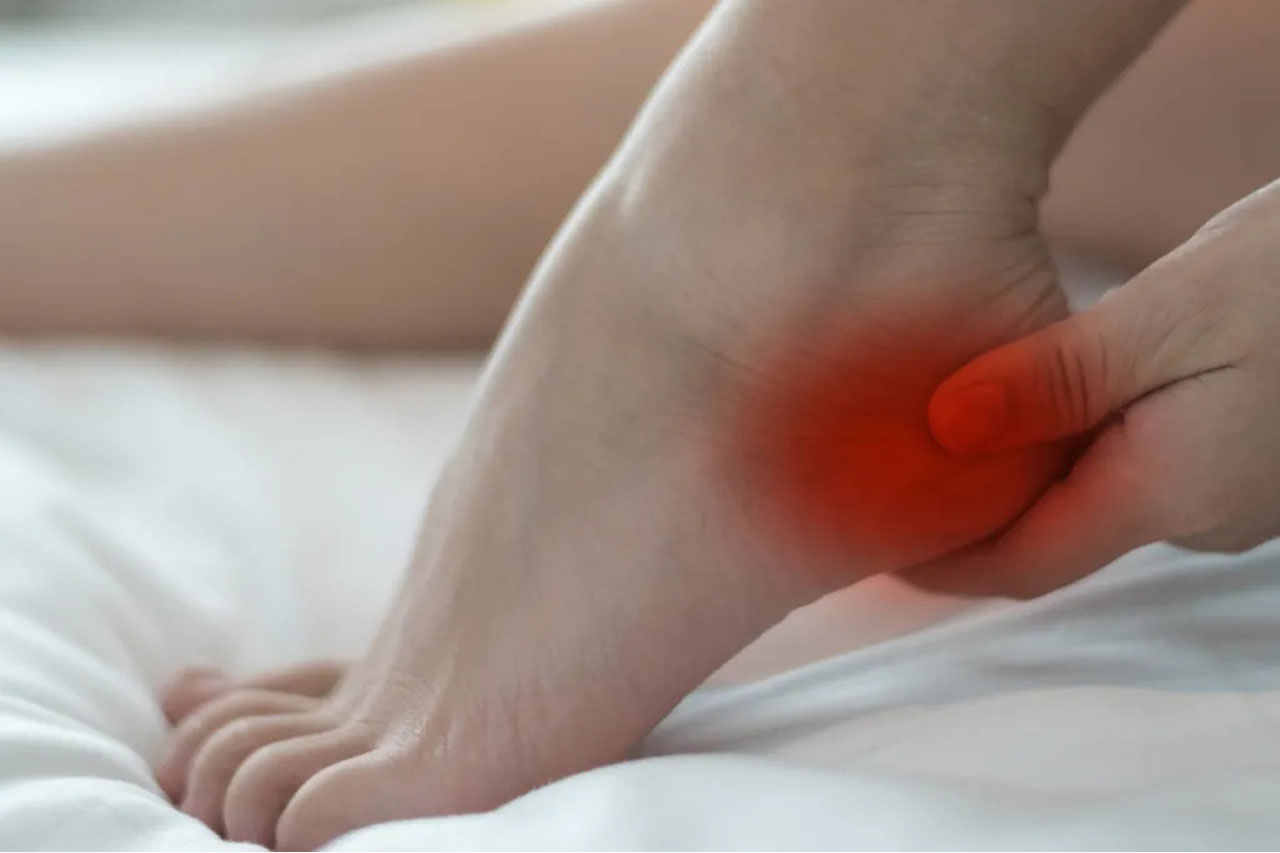Many of us wake in the mornings with a sharp pain under our foot or bottom-of-heel pain. It affects millions of Americans every day and perhaps you have experienced it as well. If this is the case, do not fret friend. In the following paragraphs, I will explain how simple adjustments to your daily habits can HEEL this condition right up… (virtual bow)
Do you have that cousin (with an associate’s degree) that tries diagnosing everyone? Well, this is one of those times that he or she may actually be right. That is because nine out of ten people suffering from plantar heel pain ARE indeed suffering from plantar fasciitis.
What is PLANTAR FASCIITIS? Plantar fasciitis is a condition where a strong supportive band of connective tissue (the plantar fascia) is inflamed, most commonly along its insertion into the heel bone.
Who can I go see? Can a podiatrist treat plantar fasciitis? Yes! Your podiatrist is the exact person that should be treating this condition. Aside from treating the condition medically (with oral medicine), a podiatrist has multiple conservative and invasive treatment modalities at his or her disposal. This may include but is not limited to…
-Orthotics and shoe adjustment capabilities including strapping and padding
-Injections
-Shock wave therapy
-Dry needling or other regenerative therapy (as in-office procedures)
-Expertise and ability to perform surgical interventions
He or she will likely start you on anti-inflammatories as well as some stretching exercises and orthotic/shoe gear modification. If further intervention is needed, the above options (amongst others) may be exhausted.
Can a diabetic benefit greatly from custom foot orthotics? And are the custom orthotics made for diabetics the same as orthotics made for non-diabetics? Yes and No… Diabetics may benefit from custom orthotics more so than any other segment of the population. Yet these orthotics are built in a totally different way. The main differences are that in diabetic shoes, the orthotics are built to Accommodate. An accommodative orthotic is deeper, softer, and has a special top cover to reduce friction and pressure. This differs from orthotics made for non-diabetic patients who require Functional orthotics. Functional orthotics alter biomechanics to improve function. The classic example is the young or middle age person with flatfeet. They don’t need a soft cushioned orthotic in their shoe. They need a more rigid, ergonomic orthotic that will provide support under the arch to prevent it from collapsing during ambulation.
As stated earlier, nine out of ten patients suffering from heel pain are dealing with plantar fasciitis. For the other 10% of people, 4 other common causes of heel pain include.
1. Achilles tendonitis
2. Heel spur/Calcinosis
3. Haglunds deformity/Bursitis
4. Sever’s disease If you’ve been treated for plantar fasciitis for the past few weeks or months and haven’t responded well to therapy, ask your doctor about one of the above conditions. Perhaps a tweak in treatment is exactly what’s needed




